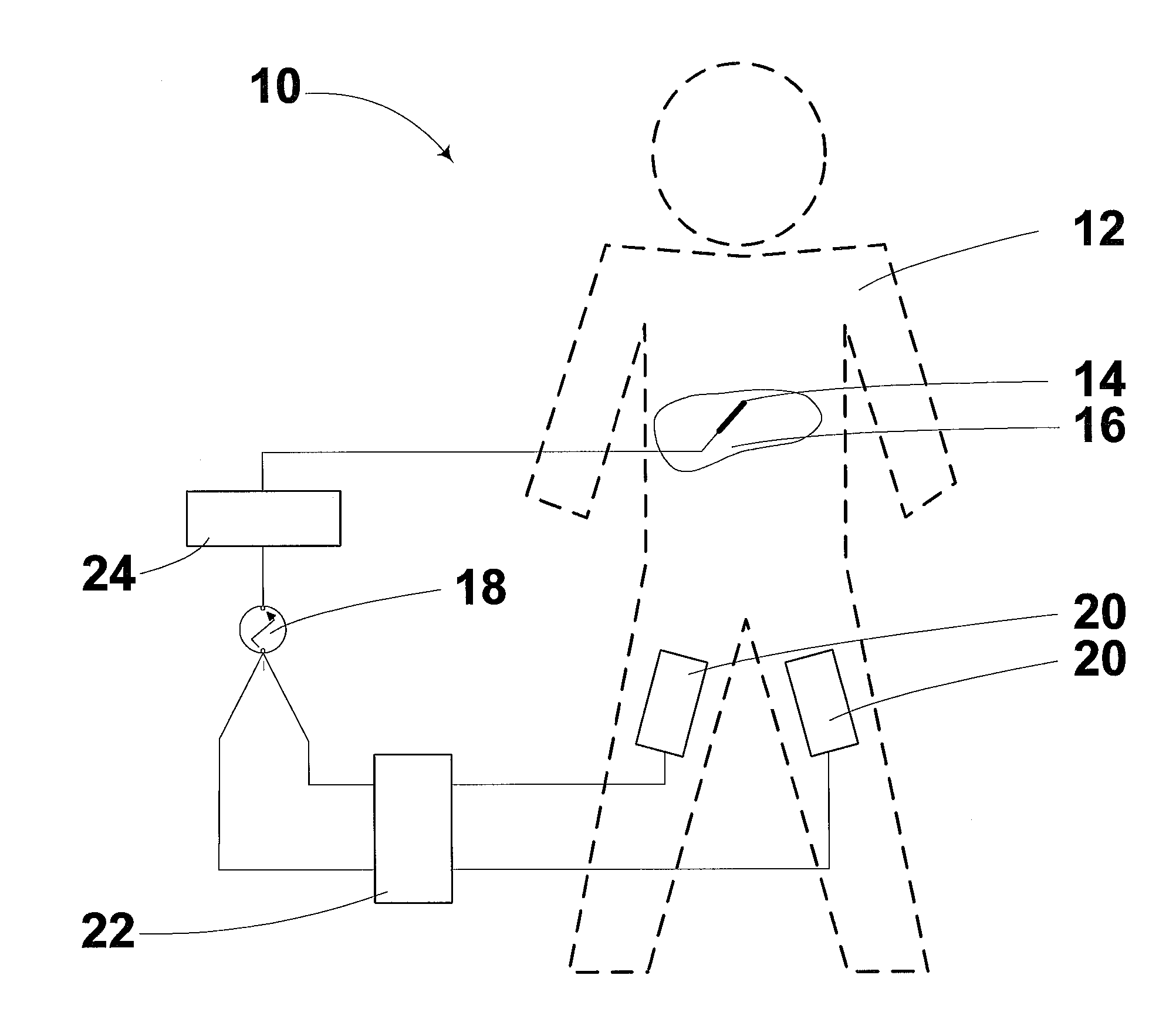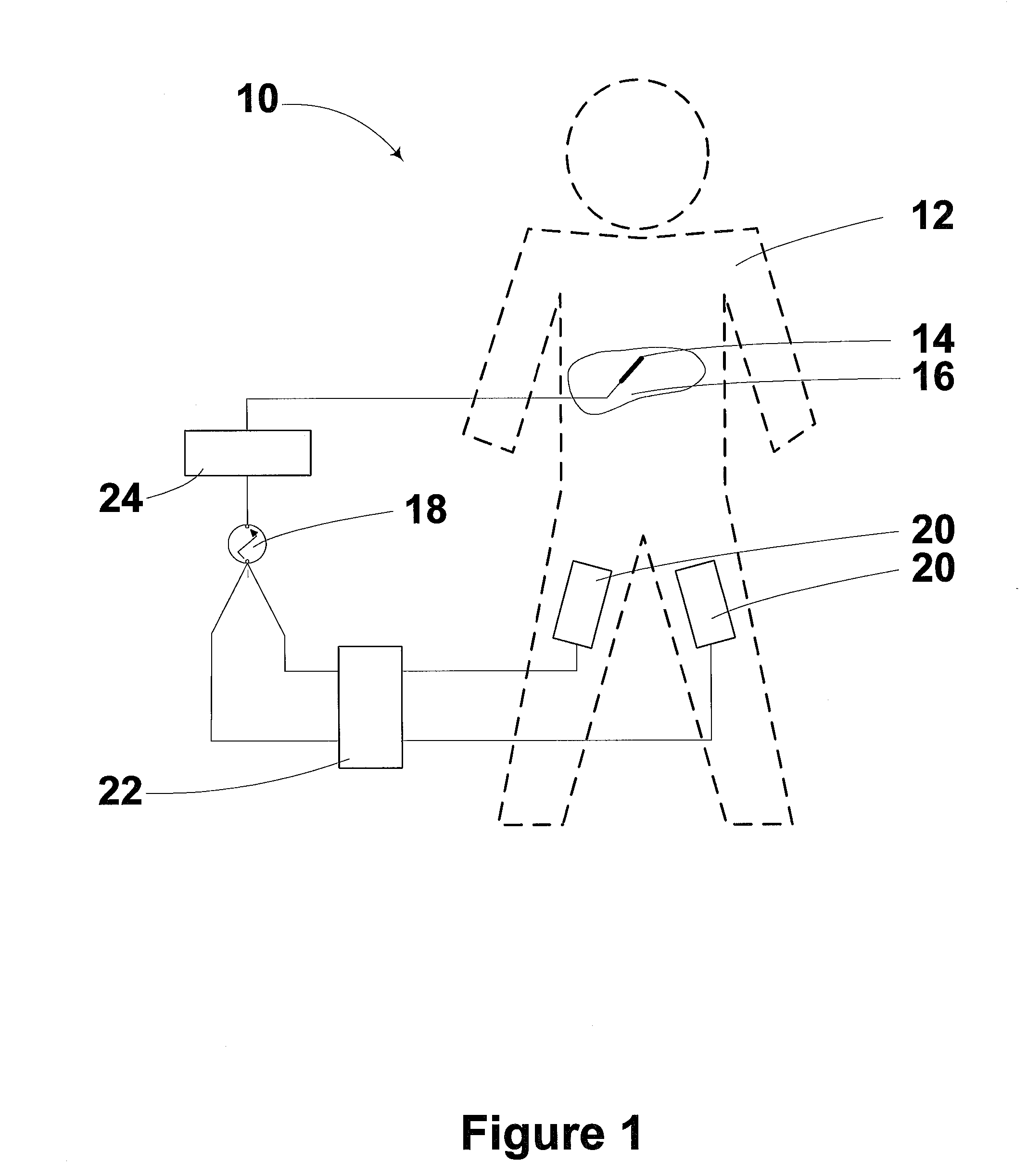Radiofrequency ablation device for reducing the incidence of skin burns
a radiofrequency ablation and skin burn technology, applied in the field of electrosurgical devices, can solve the problems of increasing the incidence of skin burns due to the heating of ground pads, the size of the coagulation zone is one major limitation in the treatment of large tumors, and the problem of tissue heating below ground pads, so as to reduce the incidence of skin burns, reduce the overall maximum temperature, and be more predictable and safer
- Summary
- Abstract
- Description
- Claims
- Application Information
AI Technical Summary
Benefits of technology
Problems solved by technology
Method used
Image
Examples
examples
[0066]The following examples are put forth so as to provide those of ordinary skill in the art with a more complete understanding of how the disclosed system can be operated. These examples are intended to be purely exemplary and are not intended to limit the scope of the appended claims. Efforts have been made to ensure accuracy with respect to the various measurements, e.g., distances, temperatures, percentages, margins of error, and the like, but some errors and deviations may not be represented in the measurements provided.
Exemplary Radiofrequency Ablation Device
Setup
[0067]A large plastic bath was filled with 0.25% saline to a depth of 8 cm. As is known, 0.25% saline has substantially the same electrical conductivity as muscle tissue at radiofrequency frequencies. At one end of the bath, a stainless steel electrode was placed to deliver radiofrequency energy. An agar-water gel (5% agar, 0.25% saline) block measuring 35 cm long×20 cm wide×2 cm thick was placed on top of smaller b...
PUM
 Login to View More
Login to View More Abstract
Description
Claims
Application Information
 Login to View More
Login to View More - R&D
- Intellectual Property
- Life Sciences
- Materials
- Tech Scout
- Unparalleled Data Quality
- Higher Quality Content
- 60% Fewer Hallucinations
Browse by: Latest US Patents, China's latest patents, Technical Efficacy Thesaurus, Application Domain, Technology Topic, Popular Technical Reports.
© 2025 PatSnap. All rights reserved.Legal|Privacy policy|Modern Slavery Act Transparency Statement|Sitemap|About US| Contact US: help@patsnap.com



